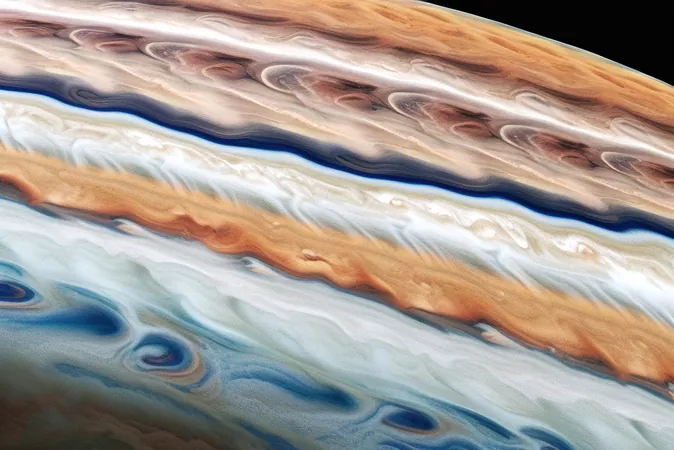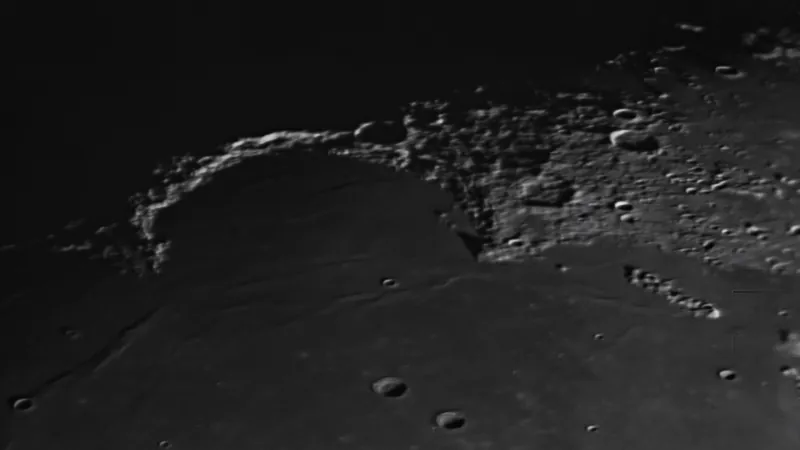
Astonishing New Research Reveals the Secrets Behind Jupiter's Cloud Layers!
2025-01-09
Author: Jia
A Breakthrough by Citizen Scientists
The research gained momentum when amateur astronomer Dr. Steven Hill, from Colorado, utilized commercially available telescopes and colored filters to examine Jupiter’s atmosphere with a novel approach. By capturing images at specific wavelengths, he measured ammonia abundance and cloud heights, revealing that the clouds exist at temperatures too warm for ammonia ice to form.
Revolutionizing Cloud Studies with Simplicity
Dr. Hill's straightforward methods enabled a richer understanding of Jupiter’s weather. His ability to assess minute differences in brightness through narrow color filters culminated in cost-effective ammonia mapping techniques, drastically simplifying previous complex modeling practices.
The Role of Citizen Scientists in Astronomy
The ammonia maps generated through these simplified techniques significantly lower the barriers for citizen scientists and amateur astronomers to monitor fluctuating atmospheric features on Jupiter and track phenomena like the Great Red Spot or small storm formations.
Cloud Dynamics and Photochemistry
Interestingly, while the main clouds are primarily not formed of ammonia ice, certain strong updrafts still allow for the occasional formation of puffy ammonia ice clouds, documented by past NASA missions like Galileo and Juno. This phenomenon occurs when rapid uplift creates conditions suitable for ammonia condensation before dispersal or breakdown occurs due to photochemical hazes.
Connections to Saturn's Atmosphere
Inspired by their Jupiter research, Irwin’s team also extended similar filter-based analysis to Saturn, uncovering comparable atmospheric features. Both gas giants exhibit cloud structures deeper than anticipated, indicating that smog formation and dynamic weather processes could also be present on Saturn.
Why Understanding Jupiter's Clouds Matters
The implications of these discoveries are profound, offering opportunities for frequent and detailed examinations of Jupiter's atmosphere. This versatile technique empowers both amateur and professional astronomers to promptly study weather patterns and gaseous distributions, further enhancing our understanding of how atmospheric elements like storms and jets develop over time.




 Brasil (PT)
Brasil (PT)
 Canada (EN)
Canada (EN)
 Chile (ES)
Chile (ES)
 Česko (CS)
Česko (CS)
 대한민국 (KO)
대한민국 (KO)
 España (ES)
España (ES)
 France (FR)
France (FR)
 Hong Kong (EN)
Hong Kong (EN)
 Italia (IT)
Italia (IT)
 日本 (JA)
日本 (JA)
 Magyarország (HU)
Magyarország (HU)
 Norge (NO)
Norge (NO)
 Polska (PL)
Polska (PL)
 Schweiz (DE)
Schweiz (DE)
 Singapore (EN)
Singapore (EN)
 Sverige (SV)
Sverige (SV)
 Suomi (FI)
Suomi (FI)
 Türkiye (TR)
Türkiye (TR)
 الإمارات العربية المتحدة (AR)
الإمارات العربية المتحدة (AR)